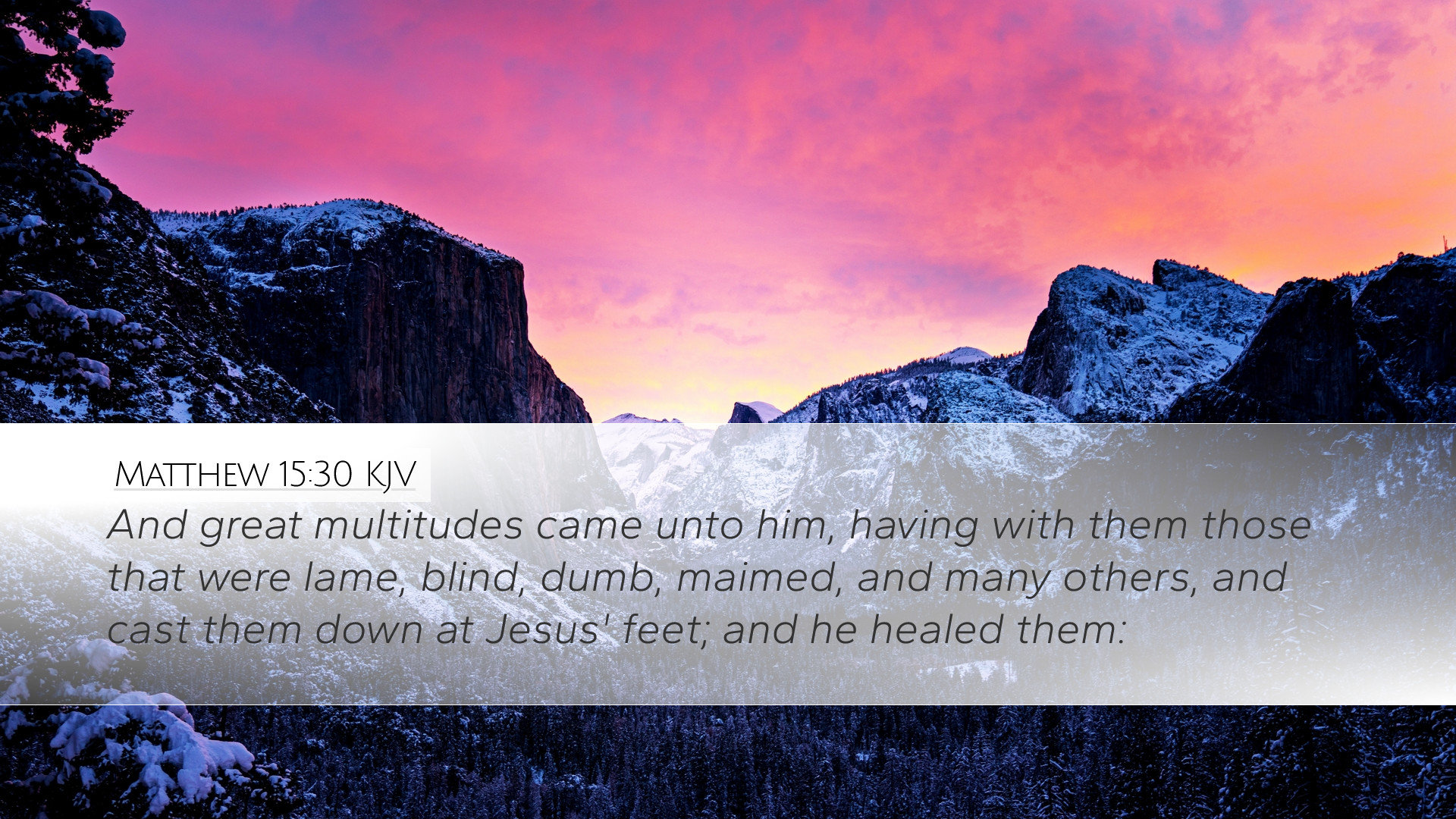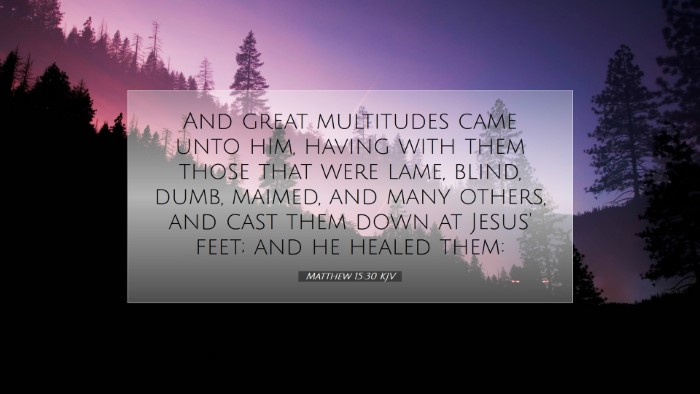Commentary on Matthew 15:30
Matthew 15:30 states, "And great multitudes came unto him, having with them those that were lame, blind, dumb, maimed, and many others, and cast them down at Jesus' feet; and he healed them." This verse provides a powerful glimpse into the ministry of Jesus, emphasizing His compassion and authority over physical ailments and spiritual needs.
Contextual Analysis
This passage occurs in the larger context of Matthew's Gospel, illustrating the ministry of Jesus among the Gentiles, specifically in the region of Tyre and Sidon. The miracles that Jesus performed were not merely acts of compassion; they were signs pointing to His identity as the Messiah and the fulfillment of Old Testament prophecies.
Theological Insights
Several key theological themes emerge from this verse:
- Divine Compassion: The multitude's approach to Jesus reflects their deep desperation and faith in His ability to heal. The physical ailments listed—lame, blind, dumb, maimed—symbolize the totality of human suffering and need.
- Jesus as the Healer: The act of healing demonstrates Jesus not only had power over physical maladies but also offers a deeper spiritual restoration. His miracles authenticate His message and reveal His character filled with mercy.
- Inclusivity of His Ministry: Jesus' ministry to those marginalized by society illustrates the inclusivity of the Gospel. He reached out to those whom society often neglected or scorned, thus affirming their worth and dignity.
Commentaries Overview
Matthew Henry's Commentary
Matthew Henry provides a thorough overview, highlighting the following insights:
- Henry notes the nature of the multitude—those afflicted in various ways came to Jesus, demonstrating their collective desperation and belief in His power.
- He emphasizes the act of casting them at Jesus' feet, symbolizing surrender and faith, illustrating that true healing begins with recognizing one’s need.
- Henry also points out that the healing of such a diverse group underscores the universal accessibility of Jesus’ grace.
Albert Barnes' Notes on the Bible
Albert Barnes offers additional layers of understanding:
- He remarks on the variety of ailments and how this illustrates the comprehensive nature of Jesus’ healing ability. This variety serves as a metaphor for the multifaceted ways sin affects humanity.
- Barnes elaborates on the fulfillment of prophecy concerning the healing of the afflicted, linking it to the messianic predictions in Isaiah, which serves to affirm Jesus as the fulfillment of God's promises.
Adam Clarke's Commentary
Adam Clarke provides critical insights into the cultural context:
- Clarke notes the significance of the location—Jesus performing miracles among Gentiles challenges prevalent Jewish exclusivism and points to the universal call of the Gospel.
- He also mentions Jesus' profound empathy towards the suffering, recognizing it as a reflection of God’s nature and love towards humanity.
Practical Applications
This verse not only serves as historical narrative but provides poignant lessons for today’s church and individual believers:
- Invitation to Approach Jesus: Believers are encouraged to bring their burdens to Jesus, who invites all who are weary and heavy-laden to find rest in Him.
- Calling for Compassion: The church is called to proactively reach out to those who are suffering and marginalized, echoing Jesus’ example.
- Faith in Action: This passage challenges us to take steps of faith, whether it be through prayer, support, or tangible help, to demonstrate the love and healing of Christ to others.
Conclusion
Matthew 15:30 encapsulates the transformative power of Jesus’ ministry. The verse extends an invitation for all, regardless of their condition, to come to Him for healing and restoration. As pastors, students, theologians, and scholars ponder this rich text, may they be reminded of the depth of Christ’s compassion and the transformative power of faith in action.


